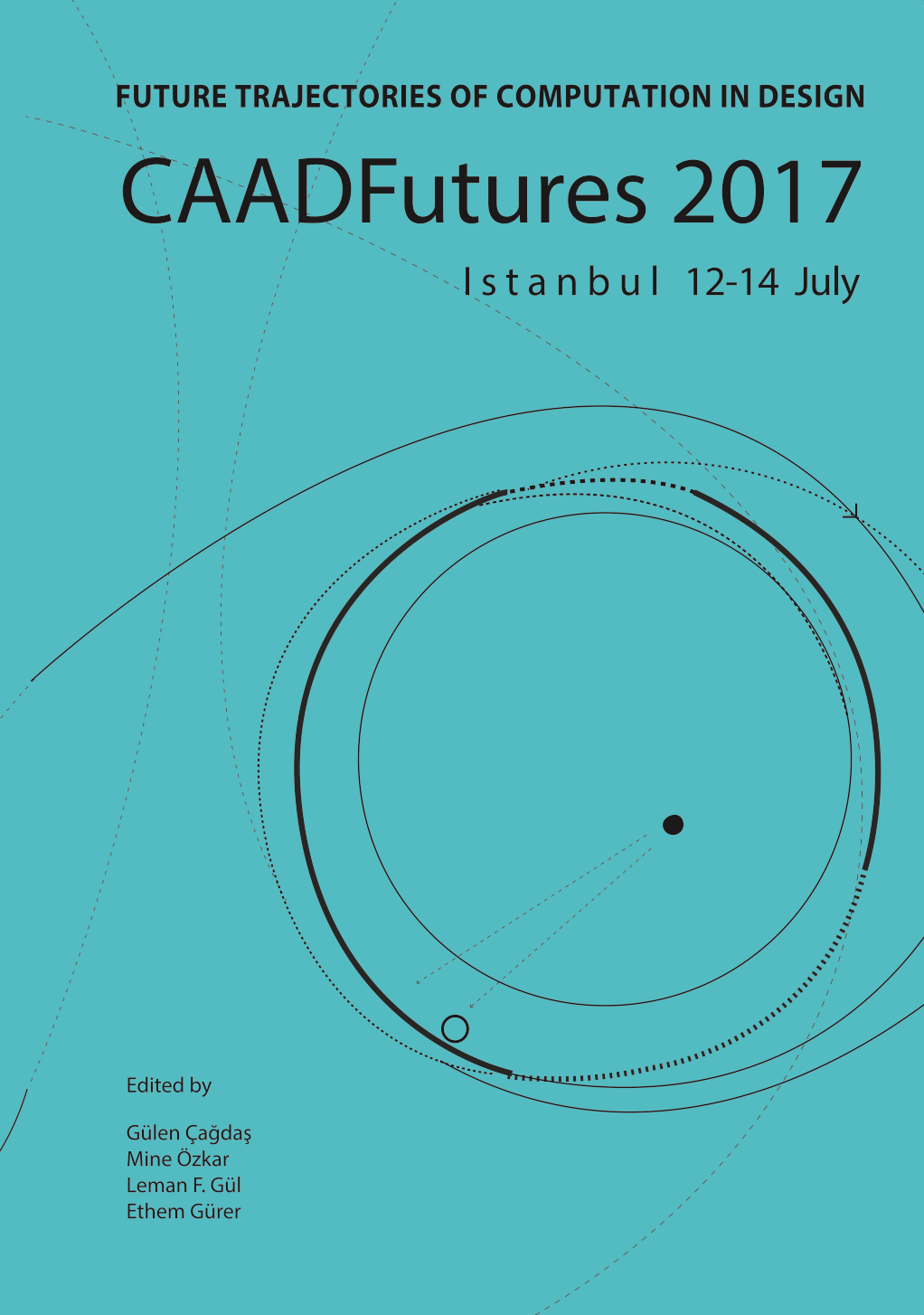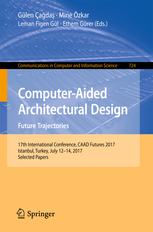CAADFutures 2017 was held in Istanbul between July 10-14, 2017 organized by Istanbul Technical University, Institute of Science, Engineering and Technology, Department of Informatics, Architectural Design Computing Graduate Program.
 |
 |
| Electronic proceedings updated 20 09 2017 |
The book of selected papers – CCIS 724 (access available until August 13th, 2017 ) The book is also available for purchase at Springer website. |
![]()
![]()
Conference Theme
The conception of design today becomes more open, communicative and relational. Designers facing this new paradigm are ever active as they focus on the increasing complexity of planning processes, on innovation of new techniques and materials, and on producing multiple levels of abstraction and decomposition rather than on the basic application of a framed profession that is learned. For the designer in the multidisciplinary world of the 21st. century, computation provides a powerful medium for the extension of understanding other disciplines.
In accordance with this global change in the field of design, CAADFutures 2017 seeks to establish a foundation for multidisciplinary thinking. The theme calls for relevant ideas from the domains of architecture, civil engineering, urban planning, mathematics, computer science, biology, philosophy etc. and introduces varying reflections and speculations on the Future Trajectories of Computation in Design as well as on the education of designers. In the continued progression of new ways of thinking, establishing such a discourse for the future of computation in design aims not only gathering latest research, design practice and pedagogical results but also to reveal the possible phenomena, factors and forces that will influence these trajectories in design with an exploratory perspective.
Research papers and exhibition submissions were invited across a range of topics that generally
include:
Design theories in digital age,
Design cognition,
Algorithmic and parametric design,
Performance-based design,
Fabrication technologies,
Modeling and simulation,
Building information modeling,
Digital design tools and devices,
Design and decision support systems,
Shape and form studies,
CAAD curriculum,
Urban design,
Smart cities,
Smart buildings,
Data analytics,
Human-computer interaction,
Collaborative design,
Augmented and virtual reality.
Researchers from the fields of architecture, design, urban design, computer science,
engineering, and other disciplines who follow these issues were invited, with special
encouragement to doctoral students, to submit research papers and critical essays, and to
attend the conference in order to widen our discussion about the future trajectories of
computation in design.
